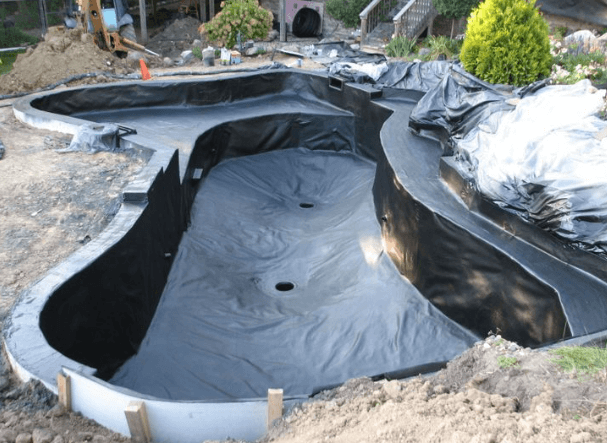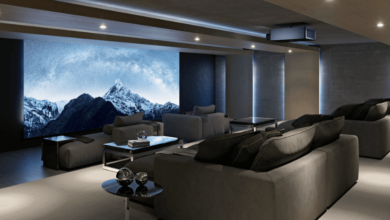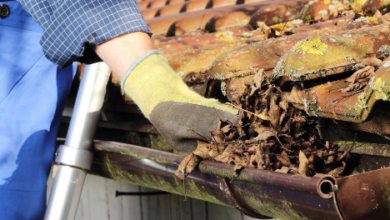Which Materials Work Best in Koi Pond Building for a Long-Lasting Pond

Koi pond building transforms your garden into a peaceful and beautiful oasis, combining natural elements with soothing water features. This vibrant aquatic installation serves as a stunning centerpiece that not only enhances the visual appeal of your outdoor space but also promotes relaxation and harmony. The careful process of koi pond building supports colorful koi fish and aquatic plants, creating a balanced and thriving ecosystem. Whether you are a beginner or a seasoned gardener, understanding the key steps involved in koi pond building is essential for a successful project.
This comprehensive guide covers every aspect of koi pond building—from the initial planning and site selection to choosing the best materials, proper installation, and ongoing maintenance. By following these expert recommendations, you will create a sustainable environment where your koi can flourish, and your pond can remain clean and vibrant year-round. Water quality management, filtration systems, and suitable landscaping are all crucial elements that contribute to the long-term success of your koi pond.
Optimized for both mobile and desktop viewing, this article is structured with clear headings and concise bullet points to make koi pond building easy to follow. Whether you’re embarking on your first koi pond building project or looking to improve an existing pond, this step-by-step guide provides practical advice and insights to help you achieve a stunning aquatic landscape you’ll enjoy for years to come..
Why Build a Koi Pond?
Adding a koi pond to your outdoor space enhances its aesthetic and creates a peaceful retreat. Beyond beauty, it supports local wildlife and promotes mindfulness through soothing water sounds. Here’s why it’s worth the effort:
- Visual Appeal: A dynamic focal point with vibrant koi and lush plants.
- Relaxation: Water’s gentle sound reduces stress and encourages calm.
- Biodiversity: Attracts birds, frogs, and insects, enriching your garden.
- Creative Project: Building a pond showcases your design skills and vision.
With thoughtful planning, constructing a koi pond is achievable for all skill levels, delivering lasting beauty to your yard.
Planning Your Pond Design and Location
The foundation of a successful koi pond lies in careful planning. Location and design choices impact functionality and maintenance.
Selecting the Perfect Location
Choosing the right spot ensures a healthy pond ecosystem. Consider these factors:
- Sunlight Balance: Aim for 4–6 hours of indirect light daily to limit algae while supporting plants.
- Avoid Trees: Steer clear of large trees to prevent leaf litter and root interference.
- Accessibility: Ensure easy access for maintenance and enjoyment.
- Visibility: Position the pond for viewing from key areas like a patio or window.
Determining Size and Depth
Pond size and depth affect fish health and upkeep.
- Depth: Koi need at least 60 cm for temperature stability; 90 cm in cold climates prevents freezing.
- Water Volume: Larger ponds (1000+ gallons) maintain stable water quality.
- Surface Area: A broader surface enhances oxygen exchange for healthier koi.
Designing the Shape
Creative design enhances your pond’s integration with the garden.
- Organic Shapes: Freeform designs blend naturally with your landscape.
- Outline the Layout: Use a hose or rope to visualize the shape before digging.
- Add Features: Plan shelves for plants or decorative elements like rocks.
Essential Materials for Your Koi Pond
High-quality materials ensure durability and support aquatic life during koi pond building.
Choosing a Pond Liner
The liner is critical for water retention. Here are top options:
- Butyl Rubber: Highly durable, puncture-resistant, and lasts 20–30 years.
- EPDM: Flexible and strong but less UV-resistant than butyl.
- PVC: Budget-friendly but less durable, best for smaller ponds.
Using Protective Underlay
An underlay safeguards the liner from damage.
- HDPE Underlay: Lightweight and effective against rocks and roots.
- Geotextile Fabric: Provides cushioning but may be bulkier to install.
Selecting a Pump
A reliable pump maintains water circulation.
- Flow Rate: Choose a pump that cycles the pond’s volume every 1–2 hours (e.g., 1000 gallons/hour for 2000 gallons).
- Energy Efficiency: Opt for models that reduce long-term costs.
- Type: Submersible pumps are easy to install; external pumps suit larger systems.
Installing Filtration Systems
Filtration keeps water clear and fish healthy.
- Pressurized Filters: Compact, efficient, and easy to clean with a flushing outlet.
- Biofilters: Use bacteria to break down waste, ideal for larger ponds.
- UV Clarifiers: Reduce algae by exposing water to ultraviolet light.
Step-by-Step Pond Construction Process
Follow these steps to build a durable, functional koi pond.
Preparing the Site
Clear and level the area for a stable foundation.
- Clear Debris: Remove vegetation, rocks, and roots.
- Mark the Shape: Outline with a hose or rope for accuracy.
- Digging: Use a square-edged shovel; create sloped sides for a natural look.
Installing Underlay and Liner
Proper installation prevents leaks and ensures longevity.
- Lay Underlay: Spread HDPE underlay evenly, securing with stones or pegs.
- Place Liner: Smooth butyl liner over underlay, leaving a 50 cm overlap.
- Secure Liner: Add water gradually to settle the liner, adjusting folds.
Filling the Pond
Careful filling maintains the liner’s shape.
- Slow Fill: Add water gradually to avoid stretching the liner.
- Check Tension: Adjust folds as water fills to prevent stress points.
- Leak Test: Monitor for water loss over 24 hours before proceeding.
Finishing the Edges
Aesthetic edges enhance the pond’s appearance.
- Decorative Stones: Use gravel, slate, or river rocks to hide liner edges.
- Plant Integration: Add marginal plants like water lilies for a natural transition.
- Secure Edges: Ensure stones are stable to avoid displacement.
Installing Equipment for Water Quality
Proper equipment setup supports a healthy pond ecosystem.
Positioning Pump and Filter
Correct placement ensures efficiency and accessibility.
- Pump Placement: Set submersible pumps at the deepest point, elevated on a stone to avoid sludge.
- Filter Location: Place pressurized filters discreetly, like in a shed or behind plants.
- Maintenance Access: Attach a rope to the pump for easy retrieval.
Ensuring Water Circulation
Good circulation prevents stagnation and supports koi.
- Pump Flow: Cycle the entire pond volume every 1–2 hours.
- Water Features: Add a waterfall or fountain for oxygenation and aesthetics.
- Regular Checks: Inspect pipes for clogs to maintain flow.
Long-Term Pond Maintenance
Ongoing care keeps your koi pond vibrant and healthy.
Managing Water Quality
Regular testing ensures a balanced ecosystem.
- Test Parameters: Check pH, ammonia, and nitrate levels weekly.
- Clean Filters: Rinse or backflush filters monthly to remove debris.
- Add Bacteria: Use bacterial supplements to break down waste.
Caring for Fish and Plants
Healthy koi and plants enhance the pond’s beauty.
- Feed Sparingly: Avoid overfeeding to prevent water contamination.
- Prune Plants: Trim aquatic plants to maintain balance.
- Monitor Health: Watch for signs of fish stress or disease.
Seasonal Maintenance
Adjust care based on the season.
- Spring: Clean pumps and filters; inspect for winter damage.
- Summer: Monitor algae and water temperature.
- Winter: Use a pond heater or aerator in cold climates to prevent freezing.
Common Questions About Koi Pond Building
Address these FAQs to clarify the process.
How Deep Should a Koi Pond Be?
- Minimum: 60 cm for temperature stability and predator protection.
- Cold Climates: 90 cm to prevent freezing.
Do I Need a Pump and Filter?
- Pump: Essential for circulation and oxygenation.
- Filter: Removes waste and debris, preventing algae and disease.
What’s the Best Liner Material?
- Butyl Rubber: Durable and long-lasting.
- Alternatives: EPDM for flexibility; PVC for budget projects.
Can I Build a Koi Pond Myself?
- DIY Feasibility: Achievable with planning and quality materials.
- Professional Help: Consider experts for complex or large designs.
How Do I Control Algae?
- Shade Balance: Limit sunlight to 4–6 hours daily.
- Filtration: Use UV clarifiers and biofilters to reduce nutrients.
- Plants: Add water lilies to compete with algae.
Final Thoughts on Creating a Koi Pond
Building a koi pond is a rewarding way to enhance your garden’s beauty and create a tranquil sanctuary. By planning the location, size, and design, choosing durable materials like butyl liners and efficient pumps, and committing to regular maintenance, you ensure a thriving aquatic environment. Whether you’re a novice or an experienced gardener, koi pond building offers a chance to express creativity and connect with nature. With this guide, you’re equipped to craft a stunning pond that brings joy and serenity to your outdoor space for years to come.





